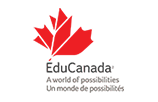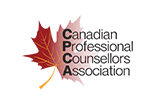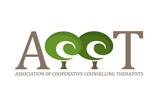
For many people, shopping is nothing more than a harmless pastime, as they use their disposable income to buy clothes, shoes, household items, and other consumer goods that promise some degree of pleasure or utility. For others, however, shopping can cross the line into an addiction, as they compulsively purchase goods that they don’t actually want or need, with money that they might not have.
Shopping addiction—also known as compulsive shopping, compulsive buying, or oniomania (Banschick, 2014)—is estimated to affect somewhere between 2-16% of the population (Black, 2007). They find themselves compulsively making purchases regardless of whether they want or need the items, leading to a loss of control over their buying, and a number of harmful emotional, social, and financial consequences (Howell, 2013).
If you’re beginning your training in addictions counselling, here are four important facts to know about compulsive shopping.
1. There’s More to Shopping Addiction Than Too Much Shopping
It can sometimes be hard to differentiate between regular consumer behaviour and compulsive shopping, but there are some clear signs that can help. Compulsive shoppers, for example, continue to make purchases even when doing so causes them distress, when they have no money to spend, and when the things they buy bring them no joy or go unused. Like other addictions, compulsive shopping might also escalate over time, as larger or more frequent purchases are needed to produce the same feeling of relief or pleasure that was once achieved with smaller, single purchases. Some other signs of compulsive spending include: experiencing relationship problems as a result of spending, continually spending despite resolutions to stop, and regularly using spending to manage unpleasant emotional states like depression, anxiety, or low self-esteem (Young, 2016).

Students in addictions counsellor training should learn the signs of compulsive buying
2. Shopping Addictions Can Often Co-occur with Other Disorders
Students in addictions counsellor training should be aware that in addition to the risks caused by their excessive spending, individuals affected by compulsive shopping might also face a greater risk of mood disorders, anxiety disorders, substance use disorders, eating disorders, and impulse control disorders, as well as personality disorders including obsessive-compulsive, avoidant, and borderline types (Black, 2007).
3. Compulsive Shopping Can Cause Serious Financial and Personal Harm
One of the major harms caused by shopping addiction is the financial ruin that it can lead to, as credit card debts pile up and become unmanageable. Even for those who do not face serious financial consequences, however, shopping addiction can lead to a range of harmful personal and emotional consequences. Compulsive spending can lead to feelings of guilt and shame. It can undermine relationships, through lying about or hiding one’s spending. It can take time away from other meaningful pursuits, and potentially even lead to hoarding (Young, 2016).
4. Shopping Addiction Mainly Appears in Developed Countries
Students studying for their addiction counsellor diploma might be interested to note that compulsive buying appears to be mostly limited to developed countries with certain conditions in place, including a market-based economy, the availability of a wide variety of goods, disposable income, and significant leisure time. Some experts have also suggested that shopping addiction could be associated with or exacerbated by consumer culture (Banshick, 2014; Young, 2016). Credit cards, which might allow buyers to psychologically separate the pleasure of buying from the pain of paying, can also play a role (Heshmat, 2018; Howell, 2013).

Credit cards might make it easier for those with shopping addictions to spend
Regardless of the conditions that make shopping addiction possible, the results of compulsive buying can be devastating for those affected, and addictions counsellors have a valuable role to play in helping their clients manage their habits, address the underlying causes of their behaviour, and recover.
Are you interested in pursuing a career in addictions counselling?
Contact Rhodes Wellness College for more information about our addictions counselling training.
Works Cited
Banschick, M. (2014 Jul 8). The Shopaholic. Retrieved from https://www.psychologytoday.com/ca/blog/the-intelligent-divorce/201407/the-shopaholic
Black, D. W. (2007). A review of compulsive buying disorder. World psychiatry : official journal of the World Psychiatric Association (WPA), 6(1), 14–18.
Heshmat, S. (2018 Jun 12). 5 Patterns of Compulsive Buying Disorder. Retrieved from https://www.psychologytoday.com/ca/blog/science-choice/201806/5-patterns-compulsive-buying-disorder
Howell, R.T. (2013 Aug 4). Why Do Shopping Addicts Keep Spending Their Money? Retrieved from https://www.psychologytoday.com/ca/blog/cant-buy-happiness/201308/why-do-shopping-addicts-keep-spending-their-money
Young, J.L. (2016 Dec 9). Compulsive Spending: What You Need to Know. Retrieved from https://www.psychologytoday.com/us/blog/when-your-adult-child-breaks-your-heart/201612/compulsive-spending-what-you-need-know









